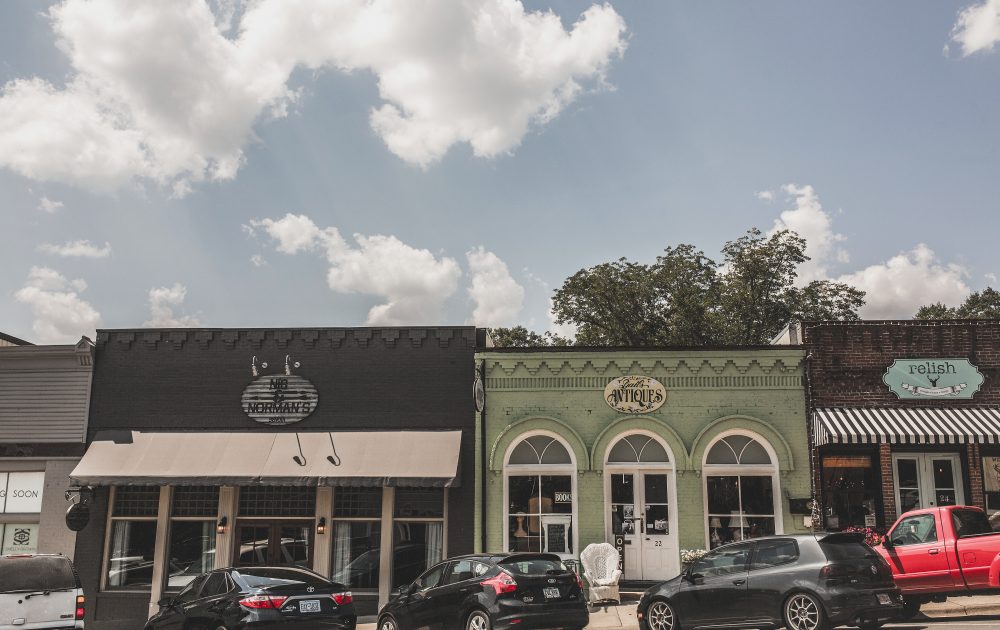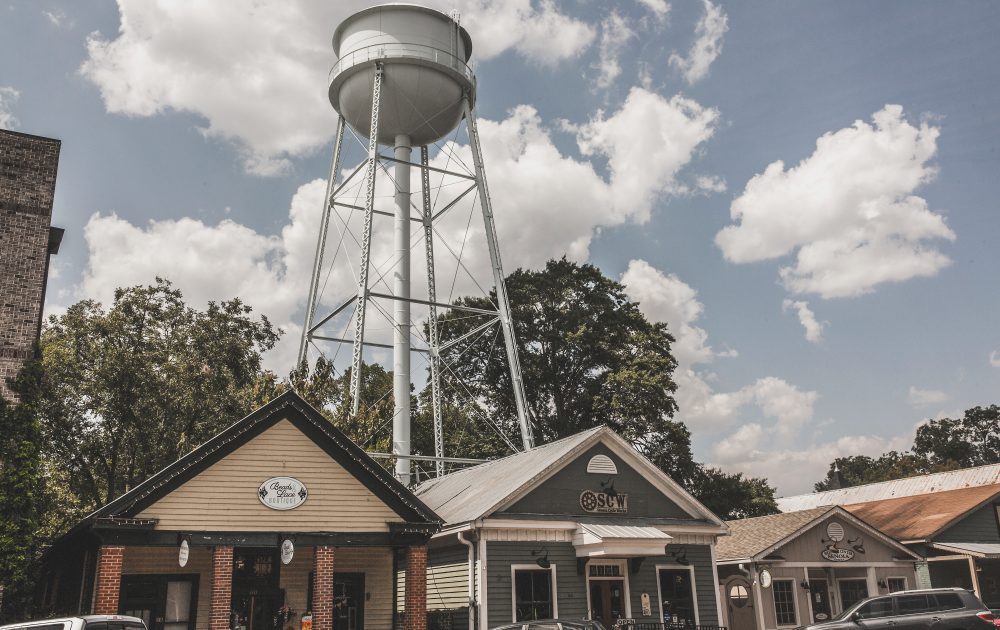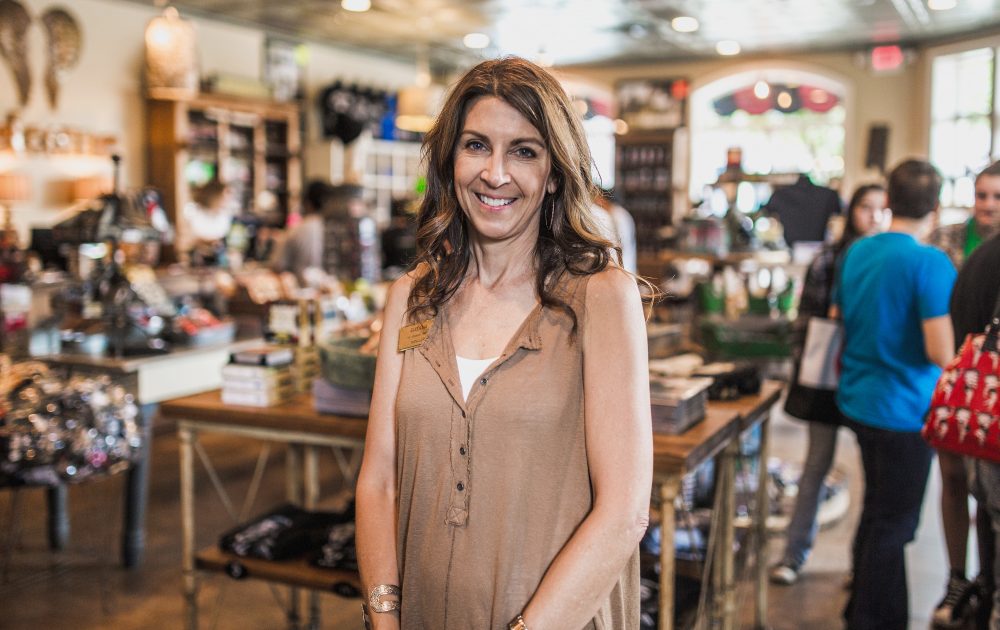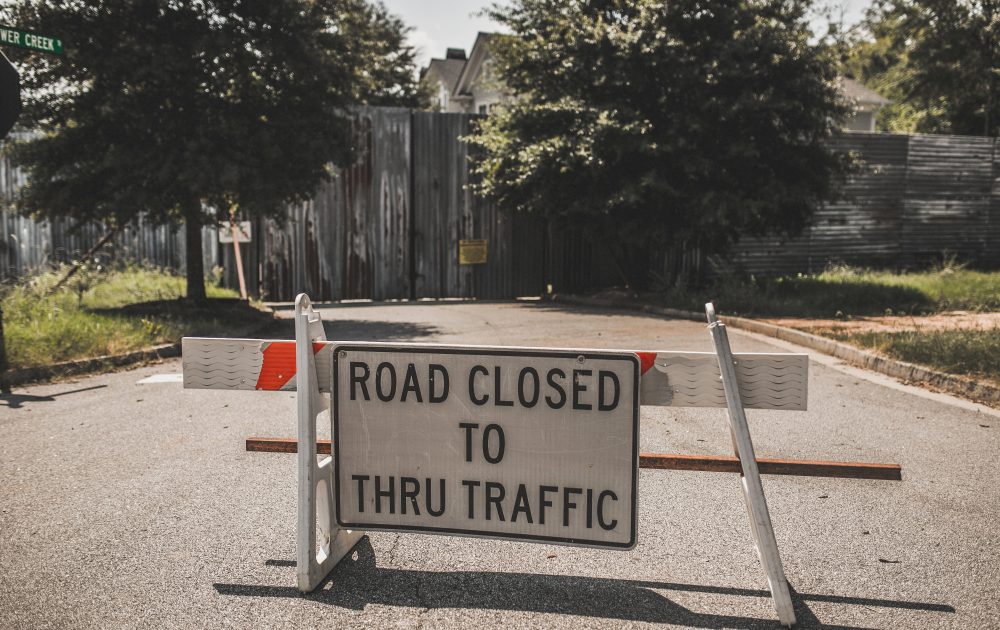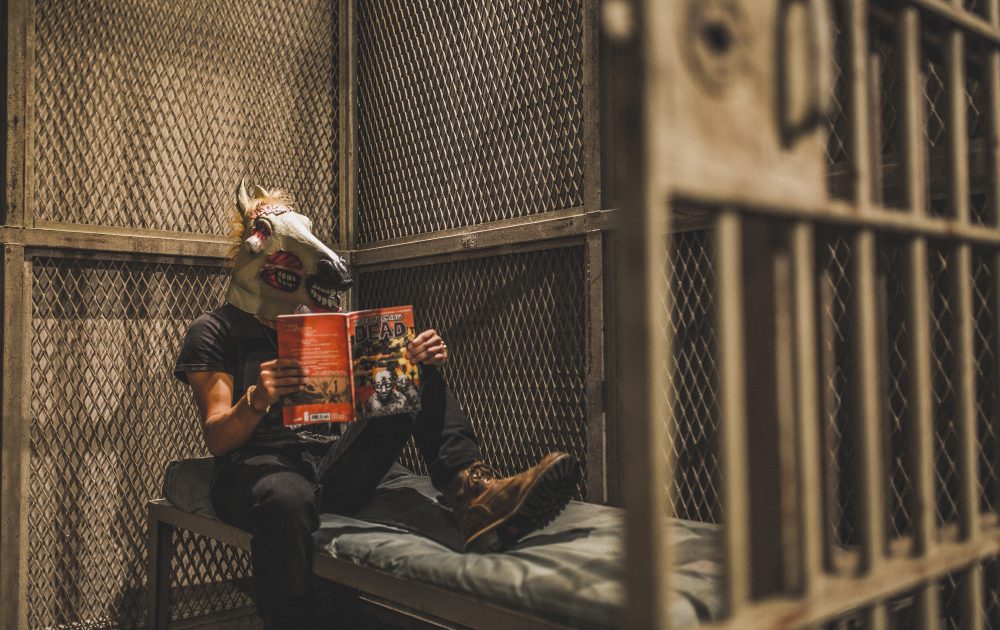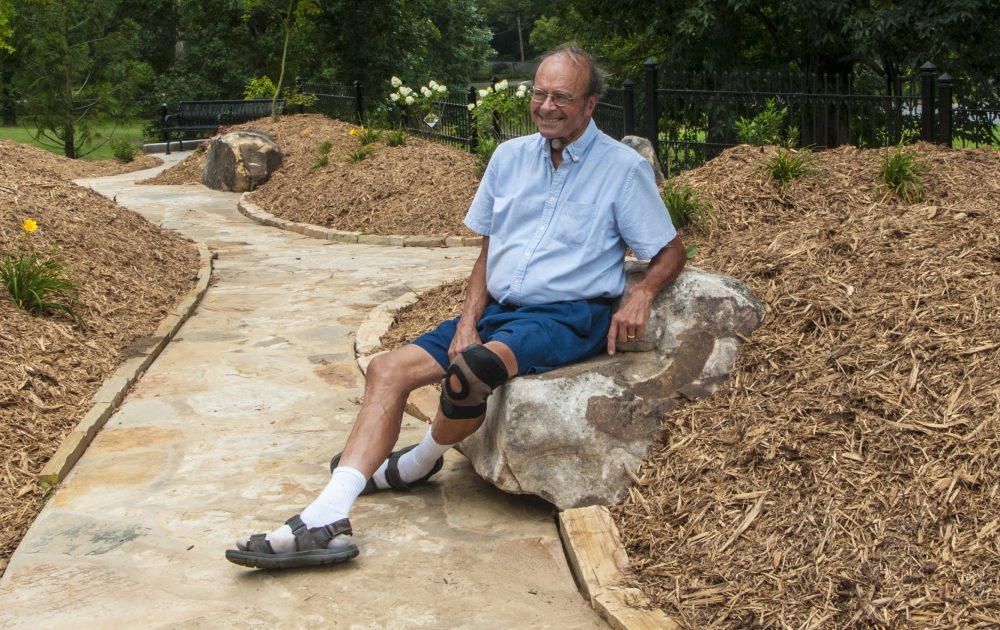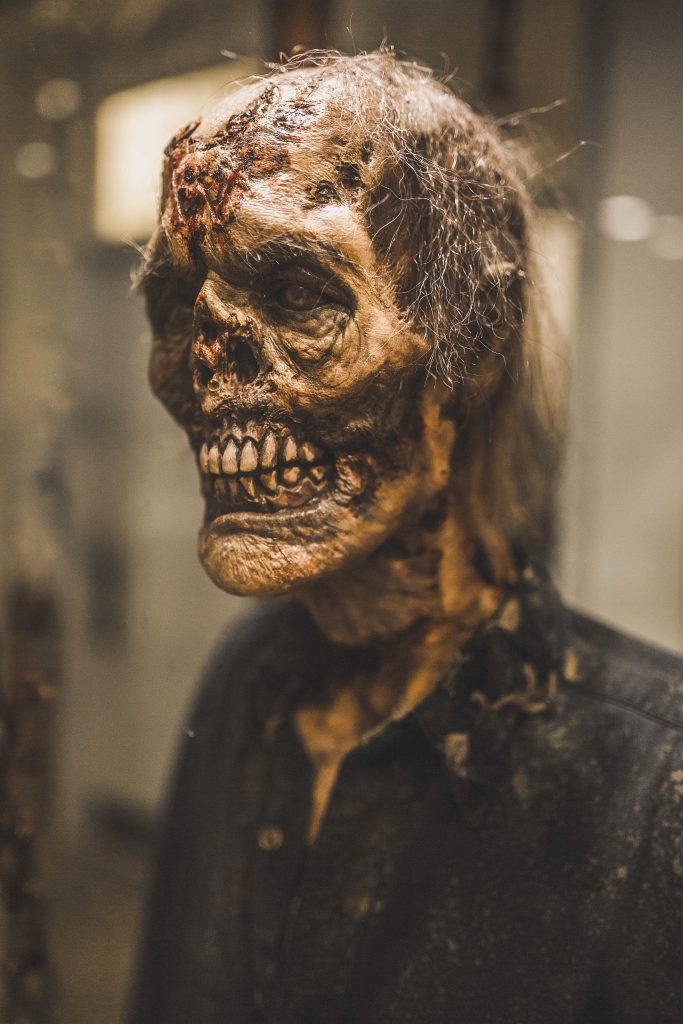
Photography Cameron Flaisch
It’s easy to imagine the film industry moving into the hustle-bustle heart of Atlanta, but some production companies are looking for a much quieter, more rural location to set as the backdrop of their films. Enter Senoia, Ga. approximately 25 miles south of the congested streets of Atlanta lies the (once) sleepy historic town. Upon entering Senoia, proudly pronounced “Suh-noy” by the locals, you will find yourself surrounded by the seemingly ordinary boutiques, coffee shops and restaurants anyone might expect to discover in small-town southern U.S.A. However, venture to the base of Main Street and you will find an enormous, rusty metal wall surrounding Alexandria, a makeshift post-apocalyptic safe-haven community from the television show, “The Walking Dead.”
In the show, Alexandria’s towering 20-foot wall keeps iconic characters such as Rick Grimes and Daryl Dixon safe from the flesh-hungry walkers (zombies) as they seek to tear their way through the survivors’ hidden community. However, as a tourist, one will only be faced with hordes of what Senoia locals have so cleverly labeled “walker stalkers.” These individuals, clad in their Walking Dead fan T-shirts, are typically armed with cameras as they explore around the walls of the set.
It’s hard to believe, taking note of the quiet hustle of patrons as they dart in and out of the busy shops and restaurants along Main Street, that Senoia was once a “commercially dying” town as Scott Tigchelaar, president of Raleigh Studios Atlanta, suggests. But today, downtown Senoia has been given a breath of fresh air by some of the most seemingly unlively of citizens, the walking dead. This place serves as the perfect example of what one gets when a quaint, southern U.S. town is infused with the No. 1 show on cable.
“It wasn’t until AMC’s ‘The Walking Dead’ and Georgia’s new film tax incentives that the town really got the lid blown off it,” said Tigchelaar. But he isn’t the only one who can attest to the rapid economic growth in Senoia, ironically caused by a show about the fall of the human race.
Savannah Grant, a born and raised Senoia local and self-proclaimed southern belle, has seen the town change since the zombie invasion. “Senoia started out as the city hall, the local library, a few buildings here and there, and then people started building out, and Scott came into the picture,” she explains. “From that time on, it blew up! ‘The Walking Dead’ is what made it happen here.”
Grant, a hostess at McGuire’s Irish Pub on Main Street, also notes the change in customers of the pub since the start of the show. “We see people from as far as California, Missouri, Hawaii, even people from as far as France,” she explains.
On the corner of Main Street, Rhodena Buck, owner of “The Woodbury Shoppe,” fittingly named after the fictional zombie safe-haven community of season three, prepares her shop before opening the door to let in this weekend’s tourists, hungry for some morbid merchandise.
“Basically, due to the filming of ‘The Walking Dead’ and the fact that downtown Senoia was Woodbury for the third season, a lot of tourists were coming into town looking for memorabilia from the show,” Buck says. “Out of need, and to meet people’s requests, we opened The Woodbury Shoppe.”
Originally from British Columbia, Canada, Buck describes the Senoia of eight years ago, before she and her family moved to this small southern pocket just a short time before the beginning of “The Walking Dead.” “It was really just a sleepy little town,” she recalls. “The developers had already started developing a lot of the town to be used for movie sets – the brownstones were in the works and we had some good restaurants – but it was just your typical little southern town.”
Buck, too, has seen her share of not-so-local tourists come through her shop to find their own piece of zombified memorabilia. “We have had people from all over the world come through – people from Germany, Europe, Asia – and we always ask them what brought them all this way,” she says. “They say they came to see ‘The Walking Dead.’”
Buck turns as someone knocks on the front door of the shop and excuses herself, saying, “I have to go let in the teddy bear girl.” At the door stands a girl – a young actress looking as though she took the wrong bus on her way to L.A. – named Addy Miller. At the age of 10, Miller was the first representation of makeup artist Greg Nicotero’s zombified citizens to appear on the show. She enters the shop with her entourage, including her mother, grandmother, artist Scott Spillman and a trailing impersonator portraying “Abraham” from the show.
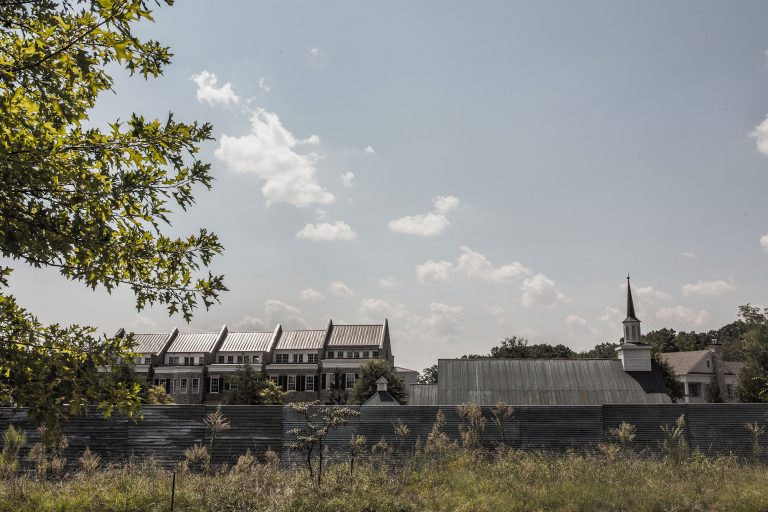
Today, Miller has come to Senoia not only to sign the T-shirts, posters and pictures of the numerous “walker stalkers” that are patiently trailing her entourage, but to sign a very important wall within the Woodbury Shoppe. At the back of the store lies a stairway entrance leading down to what only can be described as a super fan’s dreamland, a “Walking Dead” one-room museum. In the museum, designed to replicate a room out of the prison from season two, fans can get an up-close look at real set props, including Daryl’s first makeshift chopper, pieces of the demolished Woodbury Town Hall, and an all-too-realistic replica of a “walker.” Along the walls are the signatures of almost every iconic character from the show. Today, Miller’s own mark is inscribed on the wall along with a few “hearts, because I’m happy to be here,” she says.
But if, by chance, the governor’s floating zombie heads leave something to be desired, fans can always float a layer of whipped cream atop a French vanilla latte at The Waking Dead Café, conveniently attached to the museum. Ashley New, manager of the café, is happy to quench the caffeine cravings of thirsty fans.
“We have all kinds of people come through the café; we see a lot of people on their way to Disney or Orlando; however, we have a lot of people that come to vacation here for the entire week. Two weeks ago, I met people from China, Japan, France, Germany, who all flew in just to see this,” says New, smiling as she eyes two tourists talking to Daryl and Negan impersonators sitting on one of the café’s sofas.
The Waking Dead Café is not the only culinary stop that has joined the lineup of Main Street since the show’s arrival. When all of the “walker stalking” has left fans hungrier than a dejawed zombie, the newly opened Nic & Norman’s on Main Street is an obvious choice. Inspired by the tastes and styles of special effects and makeup artist Greg Nicotero and actor Norman Reedus, more commonly known as “Daryl Dixon,” the restaurant opened its doors to the public in June.
Ronnie Clark, manager of Nic & Norman’s, remembers opening night. “We’re one of the weird restaurants!” he says. “We didn’t try to publicize in any way shape or form; in fact, we tried to keep our opening quiet. The only publicity that got out was when Norman Reedus posted a selfie on Instagram wearing one of our T-shirts.”
The restaurant – with an exposed brick interior, shadeless bulb lighting over a glossy wood bar and curtains draped along the wall showcasing some of Reedus’ outlandish photography – gives happy eaters only a hint of post-apocalyptic flare. To say the very least, Nic & Norman’s has created its own culinary style.
“We’re definitely Americana. We’re big on gourmet burgers and they aren’t like anyone else’s – even our boring classic burger is a mix of ground chuck, short rib and brisket,” Clark boasts. “We have lots of people come in for their birthday – lots of anniversaries – we even once had a girl come in as part of her wish for the Make A Wish Foundation.”
Leaving the restaurant, as you make your way back to the base of Main Street, you will once again find yourself facing the sinister walls of the Alexandria Safe Zone. Outside the wall, tourists wonder what life might be like on the other side. However, for Tyler Jagt, it’s just another day at home. Jagt, a recently turned 21-year-old student of Berry College, who moved from Canada to Senoia with his family after his father became involved with the show, now comes home during his summers to a townhome built within the walls of Alexandria.
“Sometimes, it’s a little dangerous,” Jagt says, describing life on set. “They have to put a lot of tennis balls on the ends of sharp objects so they aren’t exposed.” And that is not the only danger, he explains. “The weeds are super tall because we can’t cut them; it has to post-apocalyptic, so there are snakes everywhere! They have two professional snake wranglers outside our house at all times when they’re filming to make sure no one gets bitten.”
Just as it is in the show, life within the confines of Alexandria is anything but peaceful. “The Walking Dead” is a show known for its graphic and award-winning special effects, meaning residents in and around the walls have seen more than their share of explosions, toppling church steeples, and zombie-hoard shoot outs.
“They have some really bright lights,” Jagt smiles. “Oh, and some ridiculous fans with high-powered lenses outside the wall will try and take pictures of my sister and me when we are out on the balcony, thinking we are famous, which is not the case at all. My sister sometimes throws on sunglasses and pretends.”
You may be wondering, how does a small historic town tightly wrapped in the southern Bible belt become a zombie apocalypse lover’s haven? It begins with a special effects company, quiet rural surroundings, several moves to and from Canada, and an ever-growing film industry across the State of Georgia.
Georgia has (as of 2015) the third-largest film industry among the 50 states. Our humble, ag-centered state, is eclipsed only by California and New York. According to Georgia.org, the film industry created an astounding $6 billion economic impact in 2015 alone.
It all began in 1989. As Georgia was going through its first film industry boom, Riverwood Studios opened its doors in Senoia. A product of special effects experts Paul Lombardi, the Academy Award-winning Joe Lombardi (Paul’s father), and Scott Tigchelaar, Riverwood Studios gained notoriety by working on productions such as “Driving Miss Daisy,” “Pet Sematary II” and “The War.” This same studio, after a lull in the U.S. film industry, would gain the interest and business of one of the world’s largest studio production company owners, Raleigh Studios. Today, Riverwood now operates as Raleigh Studios Atlanta, of which Scott Tigchelaar serves as president.
“Back in the 70s and 80s, Georgia was third in the nation, as it is now, primarily because it was a cheaper place to film,” says Tighelaar. “Production companies were looking to get out of Los Angeles and New York, and Georgia was the natural choice. [Georgia] was a right-to-work state and so a lot of nonunion films were produced here, the weather was good, and tax incentives were not in the industry at the time.”
Movies such as “Deliverance” (1972) and “Smokey and the Bandit” (1977) turned the lucrative eyes of Hollywood to Georgia, leading to further productions such as the hit TV show “In the Heat of the Night” (1988-94) and the Academy Award-winning film “Driving Miss Daisy” (1989). However, the film industry in Georgia would prove itself to be fickle in the mid-90s. As the U.S. came out of a recession, the dollar became very strong as the Canadian dollar weakened. In hopes of boosting their economy, Canada began implementing tax incentives for the film industry. As a result of increased buying power of the U.S. dollar in Canada and these tax incentives, Canada became the new, profitable location for the film industry.
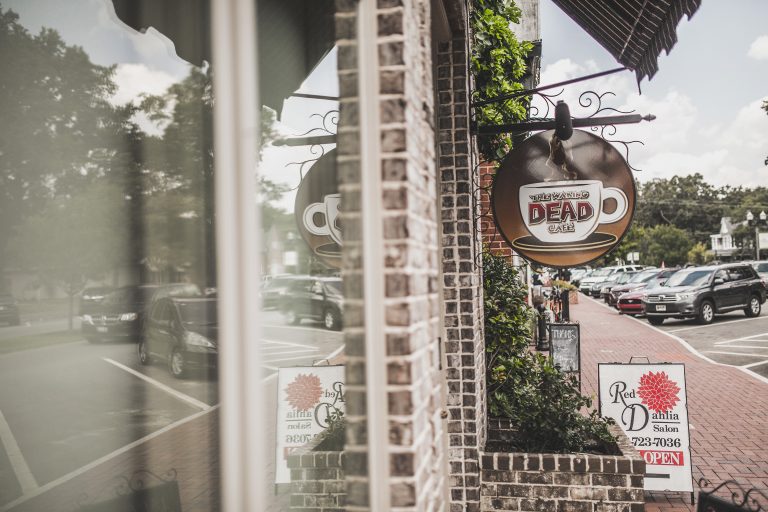
Tigchelaar remembers this time well. “From that point on, the industry was changed forever – Georgia lost most of its production activity, and other countries began to follow Canada’s lead as they passed their own tax incentives,” he says.
When the U.S. finally realized they were losing the industry – and losing it for good – the first tax incentives for the film industry were finally passed. In 2003, Louisiana passed the first tax incentive; Georgia would follow in 2008 with a bigger and better incentive.
“They did this to level the playing field and provide production companies with the incentives to film here,” Tigchelaar explains. “As of 2008, Georgia has since regained its ranking as the third-largest film production state behind California and New York, and we have a very good incentive program, crafted in a way that makes the industry sustainable.”
Simply put, Georgia’s tax incentive program allows the state to provide film producers a tax write-off against future tax liabilities, encouraging producers to spend money within the state without so much as the exchange of a check.
“[The production studios] have confidence in coming here to not only produce films, but in setting up shop and putting down their roots to produce future films,” Tigchelaar adds. “Not only does this bring in money for the production companies themselves, it grows the businesses that support them – such as the equipment rental companies, lighting, you name it.”
A great example of this is Marvel Studios – Disney’s 2009 $4 billion acquisition – committing to produce five years of movies at Atlanta’s own Pinewood Studios.
With a successful and ever-growing Georgia film industry, who knows what’s in store for the future of Senoia and Raleigh Studios Atlanta? As for now, the walkers won’t be limping out of Senoia anytime soon. Approaching the seventh season, “The Walking Dead” continues to keep eager fans at the edge of their seats as the survivors face their greatest threat yet in the post-apocalyptic world.
But, in the town of Senoia, Negan and zombies still take a lunch break around noon.

